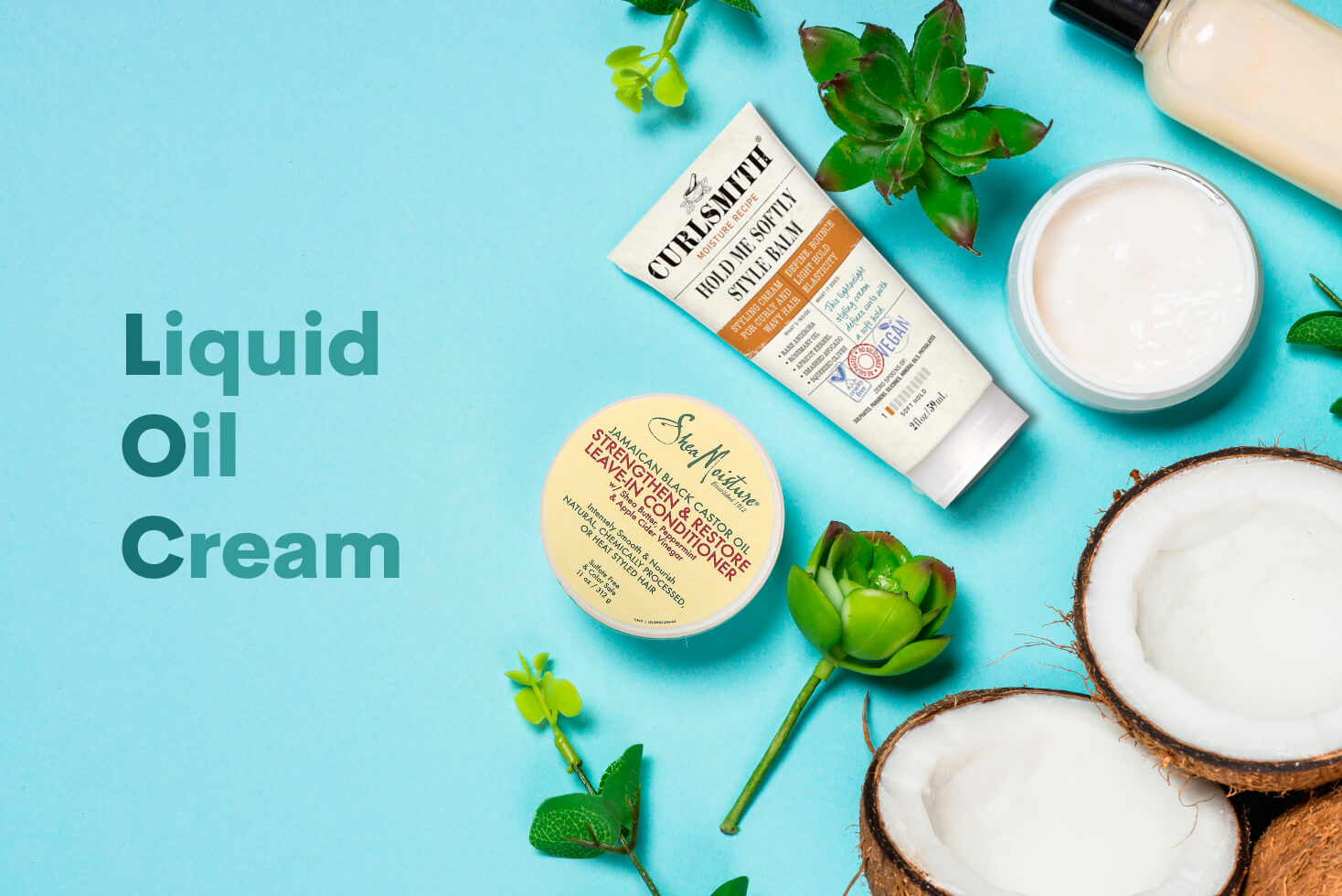The LOC Method – Revive Dry Curls With Moisture Layering
Updated on
This post may contain affiliate links. As an Amazon Associate, we may earn from qualifying purchases.

Even after years of learning about my curls and trying out multiple hair care products, my natural hair care routine has always been a hit and miss.
But one method that has consistently helped my hair from its high porosity curse is the LOC method.
LOC stands for:
- Liquid
- Oil
- Cream
All of which are essential for a curly hair regimen.
Applying your products in this order helps to maximize the amount of water your curls can absorb and retain.
For those with high porosity hair that tends to be dry, the LOC method is an excellent way to maximize hydration.
Moreover, if you are just starting on your natural hair journey trying to figure out what works best, the LOC method is the right way to start for immediate results.
You can always change the order in which you apply the liquid or leave-in conditioner, oil, and cream. Ultimately, it all depends on how your locks react.
On days when you’re feeling like you need a little more help with moisture, focus on putting the steps in an order that works for you.
On the other hand, if your hair is moisturized enough, but needs a little extra motivation to form its shape, go in with a protein-infused oil to help strengthen those curls and help them find their pattern.
To get a more in-depth explanation of why this technique is so effective and how you should proceed to apply it to your routine, keep reading below.
Table of Contents
Why Does The Loc Method Work So Well?
The LOC method’s main benefit is to improve your hair’s moisture retention.
The order in which you apply each product is the main reason why it works, but some women prefer to switch it up a little based on their natural hair type.
Not everyone will need to manipulate the order, and could easily see the best results with the original sequence, which is a liquid or leave-in conditioner, oil, and cream.
Others with different hair porosity or density may prefer an LCO method which is a leave-in conditioner, cream, and oil last.
Swapping the order of the last two products is totally preference-based, but some have found that their curls maintain moisture for a longer period of time when doing so.
Conditioners and creams are usually water-based and sealing up everything with an oil-based product does an excellent job at locking in the moisture.
Again, everybody is different so do not hesitate to swap the order to find what works best for you and your hair texture, density, and porosity.
The process is so effective because of (as I previously stated) its ability to allow each of your hair strands to capture and retain moisture. It’s a very convenient way to style because it not only enhances your curl care, but it leaves you with results that last.
The LOC technique also helps to maintain your curl pattern in check.
The carefully thought out layering technique is suitable for any hair type, but it’s not a one size fits all type of method.
What you find works for your curls may be very different for the next person, and that is totally okay. A few rounds of trial and error will end up with you understanding that your hair may have a higher demand for more oil than cream in order to see the best results or vice versa.
How to do the LOC on Your Hair
Here’s the basic protocol for the LOC method:
Step 1: L
The L in the Loc method stands for liquid or leave-in conditioner.
On freshly washed hair, use your favorite moisturizing leave-in conditioner (I suggest water-based).
Make sure you don’t dry your hair fully. Apply it to damp hair.
Best Leave-In Conditioners for LOC / LCO Methods:
- SoCozy Curl Leave-In Conditioning Spray
- Carol’s Daughter Leave In Conditioner for Dry Hair
- Shea Moisture Strengthen and Restore Leave-In Conditioner
Step 2: O
Next in the process, the O stands for the oil.
Distribute effective hydrating and nourishing oil throughout the length of your curls.
The best oils to use:
Step 3: C
The final step in the method is the cream.
While all of the parts are important, this step is absolutely crucial because it gives your curls ultra definition, moisture seal, and manageability.
For the final touch, add your favorite butter-based and smooth styling cream to your locks. Using a cream that you know works best for your specific hair will really leave you with beautiful and lasting results.
Popular curl creams for this:
- Miss Jessie’s Pillow Soft Curls
- Curls Cream Brule Curl Cream (my personal favorite)
- Curlsmith Style Balm
Altogether, the steps of the LOC method go hand in hand to supply you with the basis of a reliable and nourishing natural hair regimen, useful for all hair textures and types.
Does The Loc Method Work For High Porosity Hair?
Yes. The LOC method is designed for High porosity hair to allow it to retain maximum moisture.
High porosity curlies will benefit greatly from the definition they find when using the technique, and a great swap to make could be using a suitable amount of moisturizing cream and leave-in conditioner that you usually do, and then finding oil that contains proteins to help restore any that you may naturally lack and utilizing that step.
The LOC method does not discriminate, you can vary the process to suit your hair.
How Often Should You Do The LOC Method?
One or twice a week is good enough to do the LOC method.
Overdoing it in between washes can create lots of buildup due to all of the layers that the process demands. The buildup will coat your hair strands and weigh down your curls, robbing you of any volume you may have.
Also, over moisturization is a real issue that can easily happen to curls if you are not cautious. Providing your hair with too much moisture can cause something called hygral fatigue.
Hygral fatigue is when your hair follicles are repeatedly swelling and unswelling, which can be damaging. You can avoid this happening by only completing this method as part of your wash-and-go process.
Wrapping Up
The key to happy and healthy curls is moisture and nutrition, so staying on top of those things will keep your hair satisfied and balanced. Both of those things can be achieved easily by using the LOC method.
So go, try it for yourself, and unleash your luscious bouncy curls.
About the Author
 Jane Schlosser
Jane SchlosserJane is a freelance writer who occasionally writes for us.